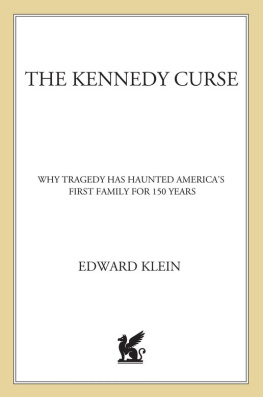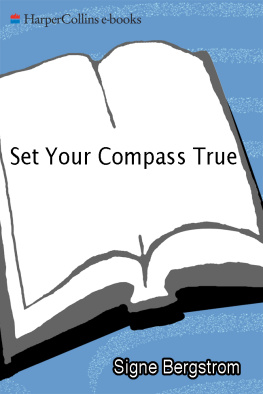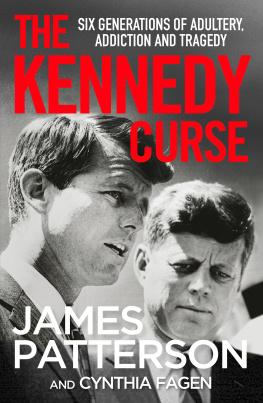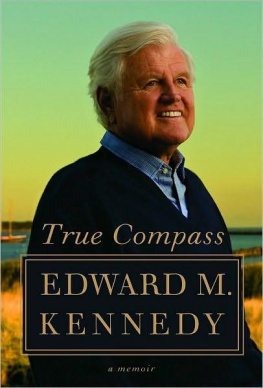My stepson, Robertson Barrett, a graduate of the John F. Kennedy School of Government at Harvard University, assisted me in researching and editing portions of this book. A whiz in both the Old and New Media, Rob is a gifted writerand thinkerand was a joy to work with as a collaborator.
My agent, Robert Gottlieb, conceived the idea and the title of this book. His partner at Trident Media, Daniel Strone, was a source of wisdom and encouragement throughout the three years it took me to complete the project. My friend Ronald Kessler played an invaluable role in bringing the manuscript to the attention of St. Martins Press.
At St. Martins Press, Sally Richardson, Matthew Shear, and Jennifer Weis provided a rare commodity nowadayssharp, thorough editing. Their deft no. 2 pencils improved the structure, language, and substance of the text. Their publishing expertise, plus John Murphys marketing skills and Steve Sniders art direction helped shape the look and feel of this volume.
Maureen OBrien got this project off the ground and introduced me to several experts in things Irish American who deserve to be singled out for their generous assistance: Peter Quinn, Michael Coffey, Terry Golway, Malachy McCourt, Terry Moran, and Jay Tunney.
In Ireland, I owe a special debt of gratitude to Kevin Whelan, Fintan OToole, Daithi OHogan, Pat Quilty, Patrick Cronin, Micky Furlong, Patrick Grenan, Cormac OGrada, and Anthony and Robbyn Summers.
For insights into the minds of five generations of Kennedys, I am indebted to Drs. Peter Neubauer and Werner Muensterberger, as well as to Sue Erikson Bloland and Dr. Mitchell Rosenthal.
For their valuable help in the voluminous research, I want to extend my thanks to Candace Trunzo, Christopher Carberry, and Robin Rizzuto.
Melissa Goldstein brought an artists eye and a detectives instincts to bear on the acquisition, organizing, selection, and layout of the photographs.
My childrenKaren and Alec Kleinand stepdaughter, Melissa Barrett Rhodes, were unstinting in their encouragement. And, of course, none of this would have been possible without the loving kindness of my wife, Dolores Barrett, who sustained me throughout the long months of creation.
THE FALL OF THE HOUSE OF KENNEDY
BY MIDDAY SATURDAY, JULY 17nearly twenty hours since the plane carrying John, Carolyn, and Lauren had disappeared in the roiling fog over Marthas Vineyardthe major television networks started broadcasting periodic bulletins about the massive search-and-rescue operation.
The news spread like wildfire. Soon Carolyns friendssome of New Yorks best-known young clothing designers, hair and makeup stylists, male models, and publicistswere heading downtown to her loft in TriBeCa. They let themselves in with the keys Carolyn had given them and gathered around her TV set in a grim, silent vigil.
With each passing hour, the chances of rescue grew dimmer and dimmer. At a certain point, one of the groupa womans fashion designerslipped away and went into the kitchen. There, he opened the door to the freezer compartment of the refrigerator and removed Carolyns stash of cocaine.
I didnt want some nosy cop finding Carolyns drugs and leaking the story to the papers, he explained.
It took three days and the combined efforts of the Massachusetts State Police Underwater Recovery Team, the Coast Guard, the U.S. Navy, and the National Oceanic and Atmospheric Administration (NOAA) to find the wreckage of Johns plane.
On Monday, July 19thirty years to the day since Teddy Kennedy drove his car off a bridge into a pond on Chappaquiddick Islandthe fragments of Johns plane were spotted by the NOAA vessel Rude using side-scan sonar.
Thunderstorms and eight-foot waves swept through the area, reducing visibility and hampering efforts by the U.S. Navy recovery ship Grasp. When on Tuesday, July 20, navy divers were allowed to descend into the murky, fifty-two-degree water, they found part of the shattered plane strewn over a broad area of seabed 120 feet below the surface of the Atlantic Ocean.
The throttle and propeller controls were in the full-forward position, indicating that the plane had smashed into the water at great velocity. In his last moments alive, John had apparently experienced spatial disorientation, and his plane had gone into a fatal graveyard dive. The force of the cataclysmic crash snapped an engine off its mount truss and tore a large section of the cabin roof from the fuselage. The aluminum seats were buckled.
The divers went in and recovered the human remains, Captain Burt Marsh, the U.S. Navys supervisor of diving and salvage, told me. It took a couple of hours. You can never play down the impact of recovering remains under circumstances like this. No diver likes that idea. Its not their favorite thing.
Flesh and bone had fared even worse than metal.
At the moment of impact, a rescue expert told me, John did not go through the windshield. The windshield went through him.
Caroline and her husband, Edwin Schlossberg, a tall, teddy-bearish man who designs museums and theme parks, brought their childrenRose, then fourteen, Tatiana, twelve, and Jack, nineto the Church of St. Thomas More on Manhattans Upper East Side for John and Carolyn Kennedys memorial service.
The three Schlossberg children were rarely seen in public. Rose and Tatiana attended Brearley, an exclusive private girls school. Jack was enrolled at Collegiate, the alma mater of his uncle, JFK Jr. The childrens privacy was zealously guarded by their parents, and as a result, the public knew less about Rose, Tatiana, and Jack than about any Kennedy since the original Patrick arrived in Boston 150 years before.
As the Schlossbergs approached the church, which was ringed by TV cameras, Rose gave a graphic demonstration of just what she and her family thought of the media. She stuck out her tongue.
As the last surviving member of Camelots First Family, Caroline faced a difficult decision: Should she follow her natural instincts and withdraw into seclusion, or should she pick up the torch dropped by her brother and assume a larger public role?
The answer to that question was not long in coming. A few months after the tragedy, Caroline made an appearance at a gala fund-raiser. She was wearing the spectacular diamond earrings that Aristotle Onassis had given her mother, and she seemed to have blossomed overnight into a stunning woman.
And that was only the first step in her new public diplomacy. With her brother gone, Caroline became the lone presenter of the annual Profile in Courage Award at the Kennedy Library. She had always been a poor public speaker; now she wowed the audience with her confident delivery.
Caroline then published a book of her mothers favorite poetry and edited an updated version of her fathers Pulitzer Prizewinning Profiles in Courage. To promote these books, she appeared on TV talk shows, where she fielded viewers questions with aplomb.
To almost everyones surprise, Caroline accepted an appointment by New Yorks schools chancellor Joel Klein to become the chief private fund-raiser for the citys hard-pressed public schools.
Caroline was the moving force behind the Metropolitan Museum of Arts hugely popular exhibit of her mothers White House wardrobe. The exhibit moved to Washington, then overseas to Paris. At the black-tie opening at Pariss Muse des Arts Dcoratifs, Caroline appeared in a vintage Chanel gown and with a flipped-up hairdo that was reminiscent of Jackies style.









